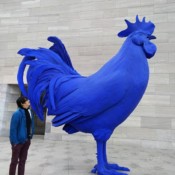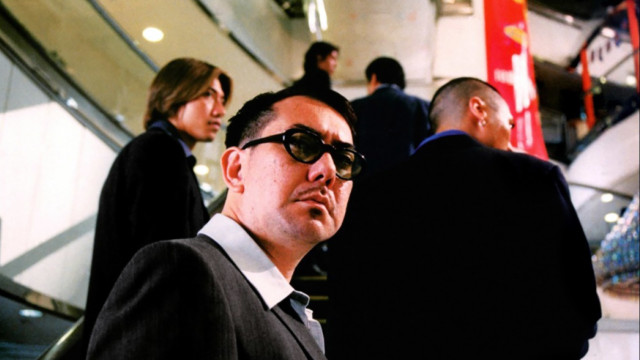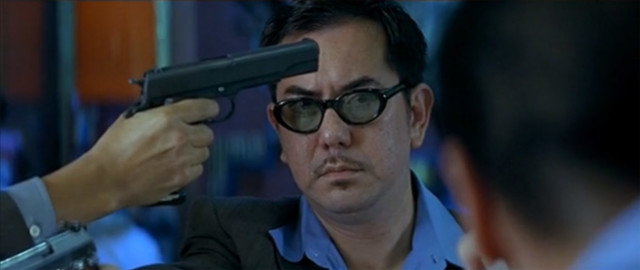Ahmad Coo is a producer and copy editor for the Global Business America show on CCTV America. His analysis represents his views alone.
Everything I know about fighting and shooting people I learned from Hong Kong action movies. Not that I’ve actually engaged people in street fights and shot anyone in my humdrum life in Washington DC. But if I found myself in very highly unlikely situation where my life was threatened, I’d probably shoot or drop kick people like a Hong Kong action star.
But I have to clarify here that I’m not talking about any Hong Kong action movie in the last few years (they’re garbage). I’m specifically referring to the genre’s heyday between the 1980s to the early aughts. For me that was the golden age for the city’s film industry – especially for action movies.
Studios were making money hand over fist, and at one point during that period some were churning out a movie every three weeks. Those were the salad days for some studio workers and everyone was making money. Most of my production crew who worked with me during my Hong Kong years were from that world and they told me about the non-stop frenetic production driving the film industry those days. Not unlike the spaghetti Westerns produced during the 1960s.
You’re probably wondering why I’m writing about a fading industry’s golden years. I only have Jeff Bezos to thank. For some reason Amazon has acquired the rights to some of the most influential Hong Kong movies ever made and now they’ve put several of them on their video streaming service.
It’s like Christmas, Eid al-Fitr, Hanukkah and Kwanzaa all came early for me. It’s also like getting access to a body of work that’s influenced every suspense/thriller/action ever made by Hollywood. For those who have aspirations of becoming an action movie auteur or director, there’s no need to go to film school. You can learn all of that stuff from watching several classic Hong Kong action movies on Amazon. Since there’s so much on there, I’ll focus on a particular director and one of his strongest works.
Johnnie To Kei-Fung’s body of work is somewhat schizophrenic – working on commercially successful romantic comedies/dramas on one hand and directing very stylized, understated action movies on the other. Most of his mass market films are pretty standard fare – bland and innocuous. But he’s at his best when he works on the dark and brooding action film genre.
While he’s borrowed some techniques from the directing greats like Jean-Pierre Melville and Alfred Hitchcock, his style is all his own. It’s something he’s developed through decades of filmmaking. The Mission fully encapsulates the To style.
In some of its tensest scenes, there’s a very noticeable lack of dialogue. Instead of following the standard Hollywood formula of all-hell breaking loose, there’s an almost balletic quality to how he lets the action develop.
The Mission probably has the most deliberate and elaborate gunfights ever committed to film. It’s still amazing to watch after all these years. I first saw the movie nearly 18 years ago and the gunfight in the shopping mall never fails to give me goosebumps. I don’t want to spoil it for my readers so I suggest everyone who has an Amazon Prime account find some time to watch it.
All the Mission’s main protagonists are retired assassins turned bodyguards. They’ve all been hired to protect a Triad boss who’s been the subject of repeated assassination attempts. The two leaders of the team are played by two of Hong Kong’s best method actors: Anthony Wong Chau-sang and Francis Ng Chun-yu. I would lament their lack of international or Hollywood exposure but I look at how Chow Yun-Fat fared when he made that jump to Tinseltown in the late nineties.
Needless to say, I can’t unwatch The Replacement Killers, Bulletproof Monk (it had Stiffler from American Pie fame co-star with Chow! That’s an unbelievable insult to one of my generation’s greatest actors) or The Corruptor. They’re all horrible movies that completely misused Chow’s considerable thespian gifts. I’ll leave the debate about whether successful actors in their home markets can ever translate to success in other larger ones for another time.
Since dialogue is very sparse throughout the movie, most of the actors have to rely on body language and facial expressions to push the plot along. Both Ng and Wong raise communicating with pauses to an art form. Sometimes things unsaid are louder than bombs.
The lack of spoken lines also highlight another To specialty – a very dry sense of humor. He’s especially adept at coming up with brutal action scenes that are meant to have you giggling to yourself. There’s tons of examples from The Mission and his later work but I won’t ruin it for you.
Though some of my readers may think I’m overstating the influence of Johnnie To and his work, you don’t have to look far to find someone who has the same level of admiration. In an interview a few years ago, Quentin Tarantino was asked about his favorite gangster movies and the directors that make them. You can probably guess the auteur he likes the most.
 CGTN America
CGTN America
 Wong Chau-sang in a scene from The Mission (1999). (Courtesy: Milkyway Image Ltd.)
Wong Chau-sang in a scene from The Mission (1999). (Courtesy: Milkyway Image Ltd.)




